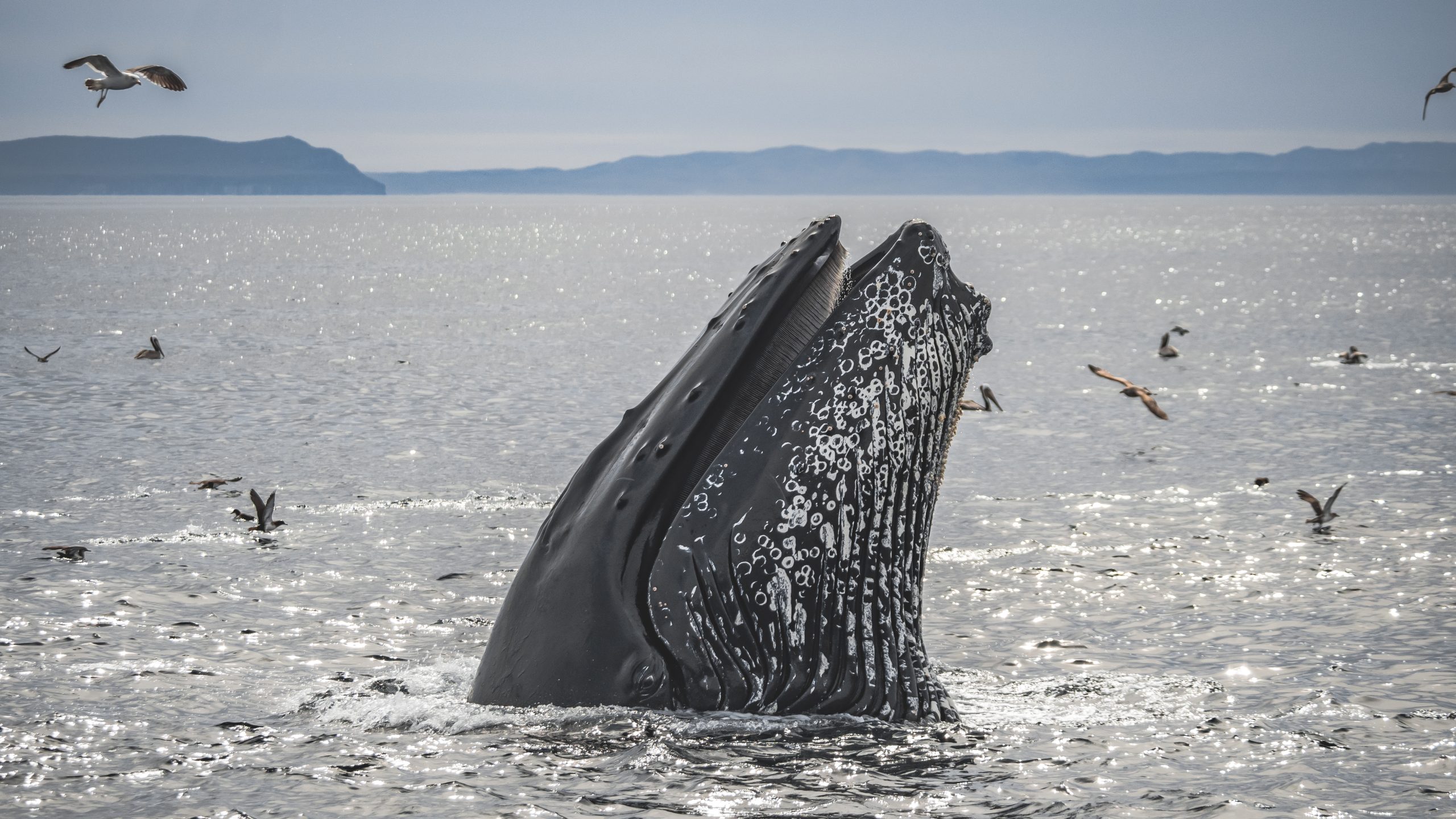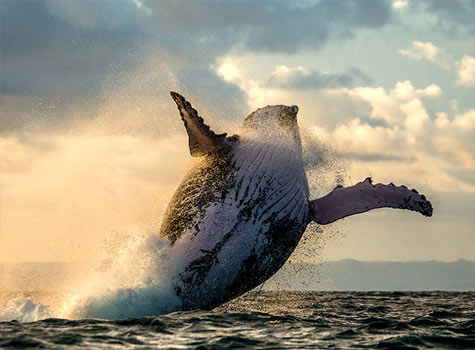Whales help sustain the entire living system of the ocean. They have the power to inspire us to care about our oceans. Almost 30 percent of the world’s 93 whale and dolphin species have been documented in the Santa Barbara Channel, making our local waters one of the best places in the world to go whale watching.
Whales have a powerful and positive influence on the function of oceans, global carbon storage, and the health of commercial fisheries. Whales serve as nutrient pumps, feasting on fish and invertebrates. Many whales release fecal matter at the surface, which fertilizes the surface of the sea. Their poop packs a powerful energetic punch, providing critical nutrients like nitrogen and iron to stimulate the growth of microscopic plant plankton (phytoplankton) in the photic zone, which is the uppermost layer of the world’s oceans bathed in sunlight. This fertilizer enhances ecosystem productivity. Additionally, it is the phytoplankton that is the base of all life in our world’s oceans. Not only do phytoplankton provide life sustaining oxygen through photosynthesis, but they also consume carbon dioxide on a scale equivalent to forests and other land plants.


The turbulence of whales diving, surfacing, and exhaling stirs the water column, mixing vital nutrients, thus increasing the biodiversity of the ocean. More biodiversity equals more carbon stored. Increases in the abundance of phytoplankton means more CO2 being removed from the atmosphere, thus mitigating the impacts of climate change.
Healthy populations of whales enhance the level of carbon transfer to the deep ocean through “whale falls.” When a whale dies, its carcass sometimes descends to the deep ocean floor. The carcass of a single large whale transports 190,000 tons of carbon, the equivalent of the carbon produced by 80,000 cars per year. A great whale on average can capture over 33 tons of carbon in their lifetime and take it with them when they die and sink to the deep sea, keeping the carbon out of circulation for thousands of years. These deep oceans are what we call "carbon sinks" because they trap and hold excess carbon from the atmosphere, and therefore help counteract global warming.
By conservative estimates, the historical global whale population was six times greater than it is today. When the unique ecological contributions of whales are taken into consideration, this dramatic decline is likely to have had profound effects throughout our oceans. Now that we know whales play a critical role in enhancing the productivity of marine ecosystems, we need to do everything we can to continue to save whales for their sakes and for ours.
In 2023, the World Cetacean Alliance and World Animal Protection announced the Santa Barbara Channel Whale Heritage Area (SBCWHA), designated as the 9th Whale Heritage (Site) Area in the world. This designation highlights the region’s commitment to promoting responsible ecotourism, providing more ocean educational opportunities, supporting on-going research and conservation efforts, and honoring the timeless cultural connection we have to whales.
The Santa Barbara Channel, renowned for its rich biodiversity and thriving marine ecosystem, has long been a haven for more than 25 different species of cetaceans (whales, dolphins and porpoises) including resident common dolphins and bottlenose dolphins, plus visiting species of dolphins; Risso’s dolphins, Pacific white-sided dolphins, Dall’s porpoises and even occasionally orcas. Larger great whales, like blue whales, fin whales, humpback whales who feed seasonally in the Santa Barbara Channel, are also frequently seen here. In addition, more than 15,000 Pacific gray whales migrate through the channel on their way to their breeding grounds in Baja, Mexico in the winter and their feeding grounds in the Arctic in the summer. The Santa Barbara Channel Whale Heritage Area aims to promote sustainable practices that preserve and protect these majestic creatures for generations to come.
